I remember a time when managing PPC campaigns meant juggling spreadsheets, browser tabs, and daily stress.
Back then, I spent hours analyzing keywords, adjusting bids, and rechecking data so I wouldn’t miss any opportunities.
That was long before specialized PPC management tools became common.
Now in 2025 there are many solutions that make everyday work simpler.
But which ones really work?
In this post I cover nine PPC management software packages that have helped me achieve real results, reduce repetitive tasks, and offer practical features for today’s automated advertising.
But before we get started, here is a quick diagram showing the tools in this article, in case you do not want my personal opinion:
I have used these tools myself, so everything here comes from real experience. Let’s get started.
1. SEO.AI

I work at SEO.AI, so naturally, it’s on my list - but not just out of loyalty. In 2025, SEO.AI made a serious leap for PPC pros: its feed optimization tools now let you supercharge product listings for Google Merchant Center and other ad platforms, all in one streamlined workflow.
Why SEO.AI Delivers for PPC
- AI-powered product data optimization: Every attribute (title, description, category, and more) is tailored by AI to match high-intent search queries so your ads reach the right audience.
- Intent-driven keyword enrichment: The platform injects relevant keywords into each product detail, syncing your listings with both how customers search and how Google ranks.
- Error-proof, compliant feeds: AI catches and corrects missing, invalid, or misformatted data to keep your feeds clean and your ads live. No more last-minute disapprovals.
- Direct Google Merchant Center integration: Push optimized product data straight into your campaigns with no manual mapping or tedious exports required.
How It Cuts PPC Spend
- Better feeds, better results: Higher-quality, keyword-rich product data means your ads earn more impressions and clicks without inflating your budget.
- Boosted ad relevance and Quality Scores: Optimized feeds translate to lower CPCs and stronger campaign performance.
- Time-saving automation: Let AI handle the heavy lifting so you can focus on strategy while maintaining a consistent brand voice across every ad.
I’ve watched brands slash their PPC costs and run leaner, more effective campaigns after adopting SEO.AI.
The feed optimizer is not just a nice-to-have.
It is essential for anyone serious about bridging the gap between SEO and paid search, reallocating spend, and maximizing every ad dollar.
If you are new to PPC management, then check out our guide on PPC management before picking a tool.
2. Google Ads Editor
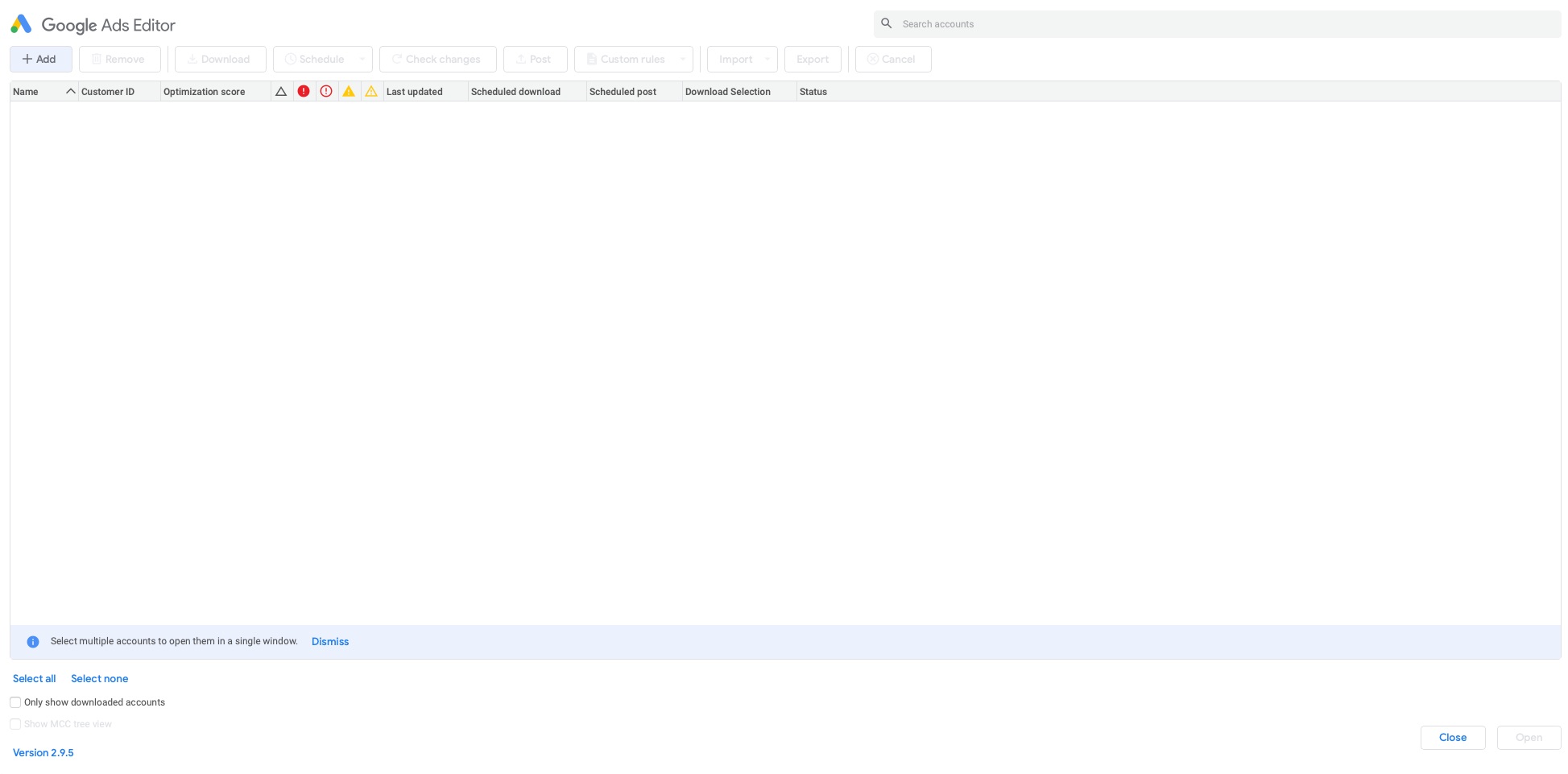
Yes, I know it’s Google’s own tool, and it has improved a lot since the early days.
Google Ads Editor helps me manage large campaigns quickly. I can reshape entire ad groups, update keywords in bulk, and adjust bids offline.
Once I’m satisfied, I simply push the changes online.
Even though some paid tools offer extra features, Google Ads Editor stands out mainly because it is free.
Supports:
- Bulk edits (bids, keywords, ads)
- Offline changes
- Quick duplication of campaigns
My honest take:
If you’re already using Google Ads, you should include Google Ads Editor in your toolkit. It is simple, reliable, and doesn’t cost anything.
3. WordStream Advisor
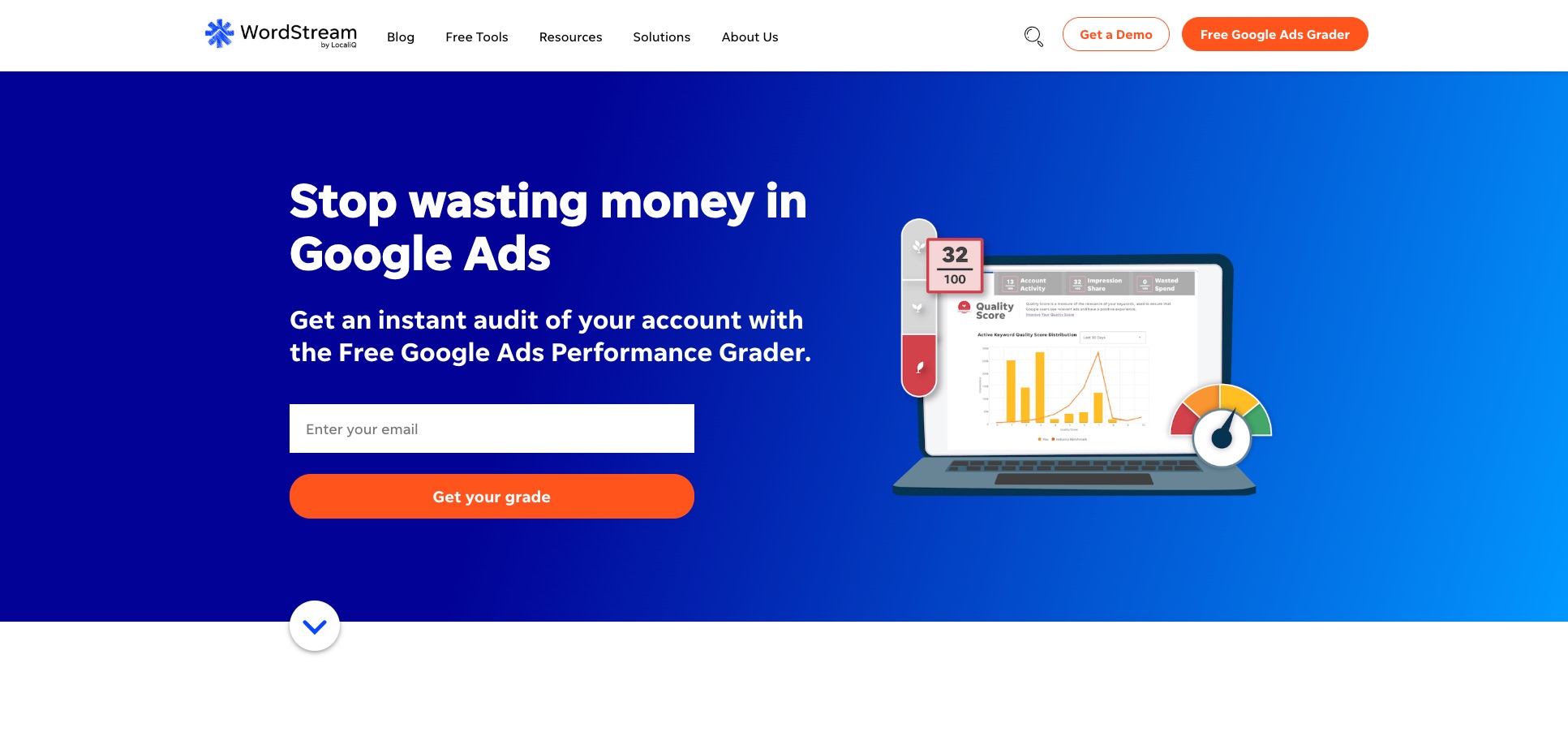
WordStream Advisor has been my go-to for making daily tasks easier.
It offers a 20-minute Work Week feature that gives you a checklist of priorities. It isn’t just about saving time; it also helps me identify new keywords and ad ideas to try.
Once I inherited an account cluttered with thousands of old keywords. WordStream Advisor pointed out the underperforming ones, suggested negative keywords, and prevented budget waste.
Within a few weeks I reduced costs by 15% and increased conversions by 10%.
Key benefits:
- Quick recommendations that work
- Automated bidding options
- Integration with Google Ads and Facebook Ads
One drawback: It may be more than necessary if you only have a few campaigns. WordStream Advisor shines when you have a lot of data.
4. Semrush
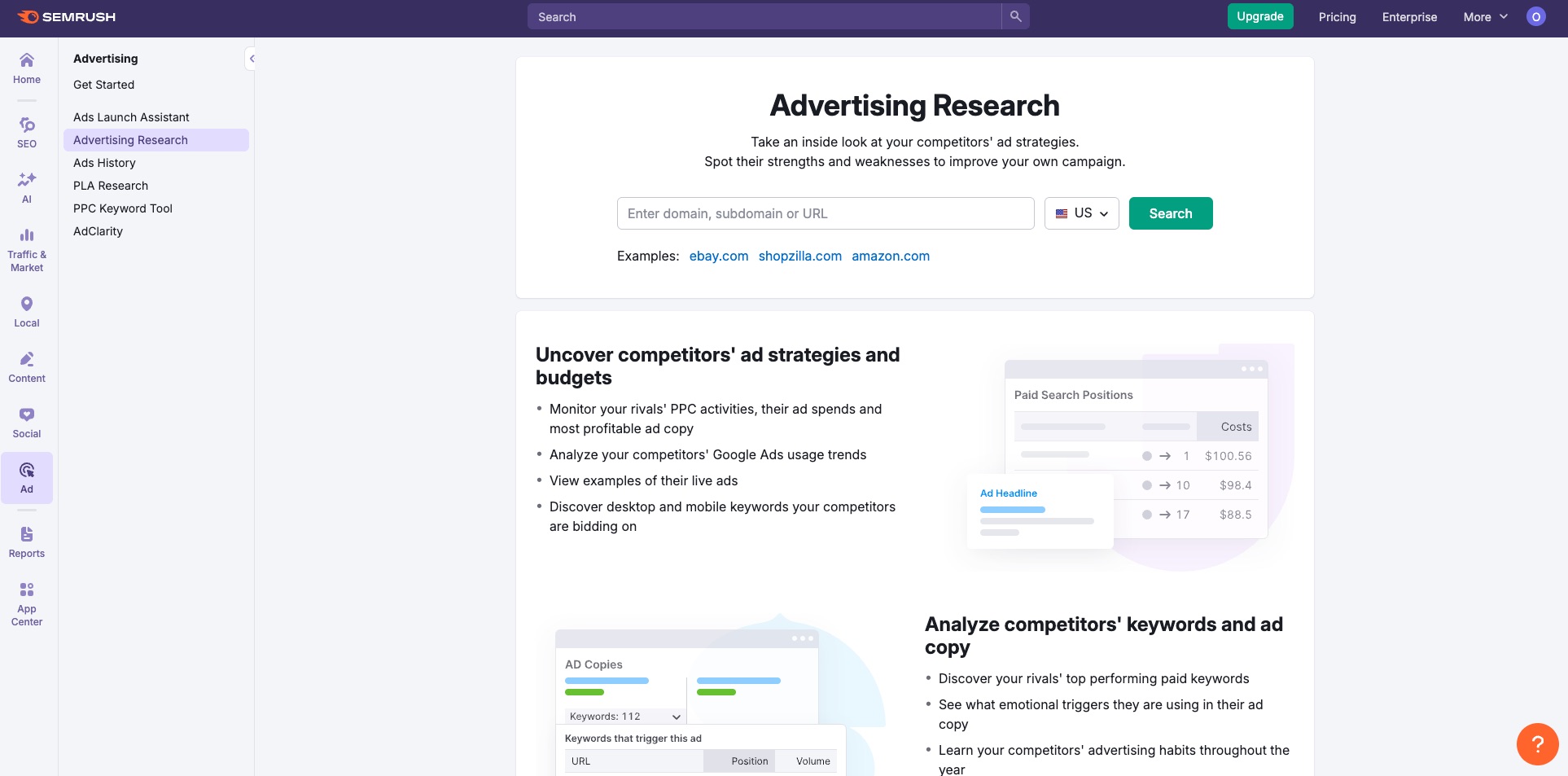
I have used Semrush for SEO audits, keyword research, and competitor insights for years.
The platform also offers solid PPC features, including detailed keyword data, ad tracking, and competitor PPC analysis.
This has been very useful when looking into new niches or trying to bid more effectively against tough competitors.
Top highlights:
- Competitive intelligence: See how your PPC performance compares with other brands.
- CPC mapping: Learn about bid amounts in different regions.
- Ad builder: Create and optimize ad copy right in the tool.
A big reason to use Semrush is the reliable data it delivers.
If you work best with detailed metrics, this tool will help you fine-tune every part of your campaign.
5. MarinOne
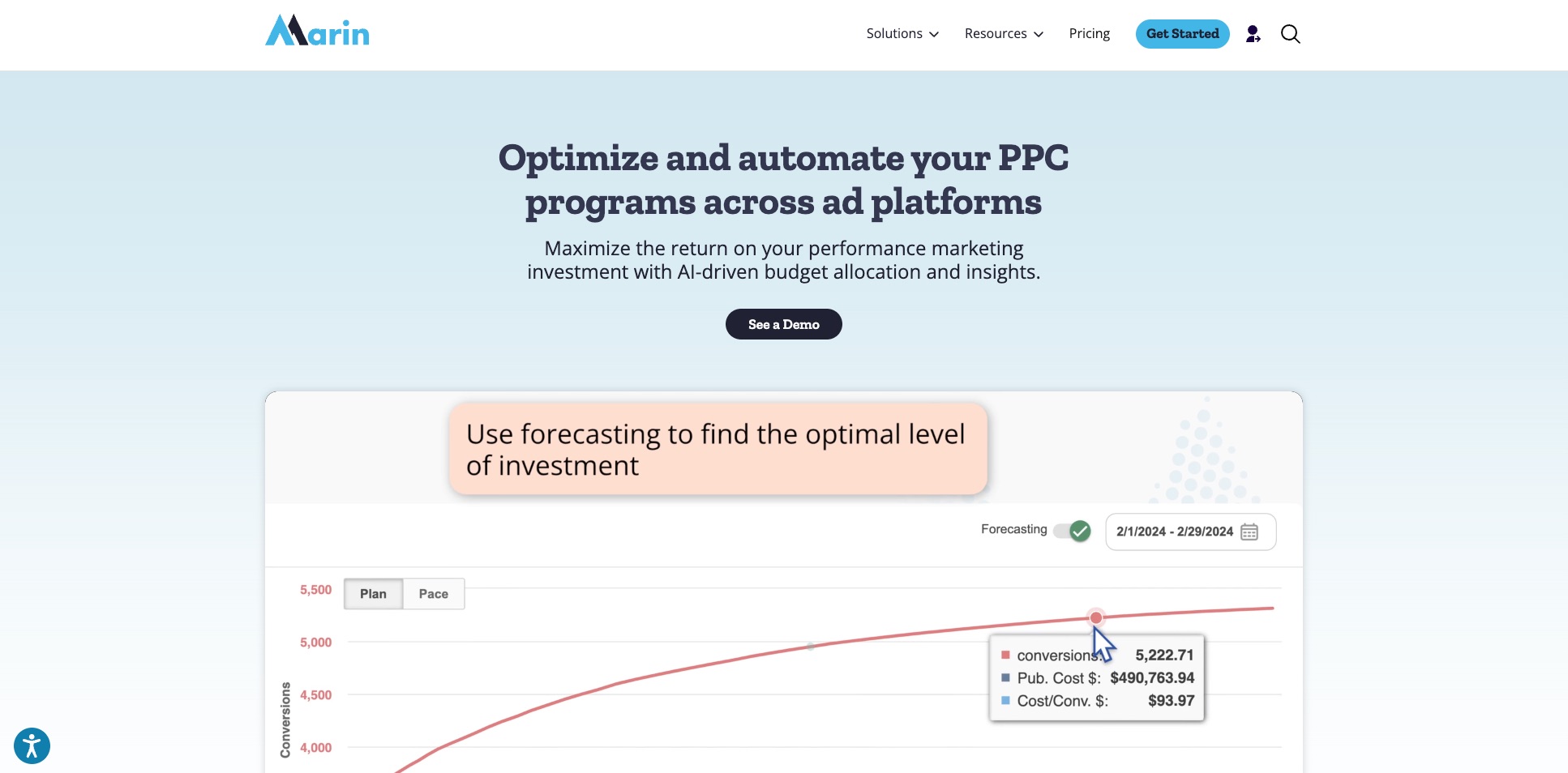
MarinOne is designed mainly for large advertisers, such as enterprise-level clients.
It first became known for search ads, but now it also supports cross-channel marketing, including social ads and eCommerce platforms.
I used MarinOne while managing ads for a national brand. I appreciated how it adjusted bids based on real-time performance.
The system’s algorithms helped keep ROI in check without constant manual adjustments.
That was a huge time saver when working with many ad groups.
MarinOne’s core perks:
- AI-based bidding strategies
- Tracking across multiple channels (search, social, eCommerce)
- Advanced budget forecasting
It is not inexpensive, but for those managing large ad spends the automation and detailed reporting can be worth the price.
6. Optmyzr
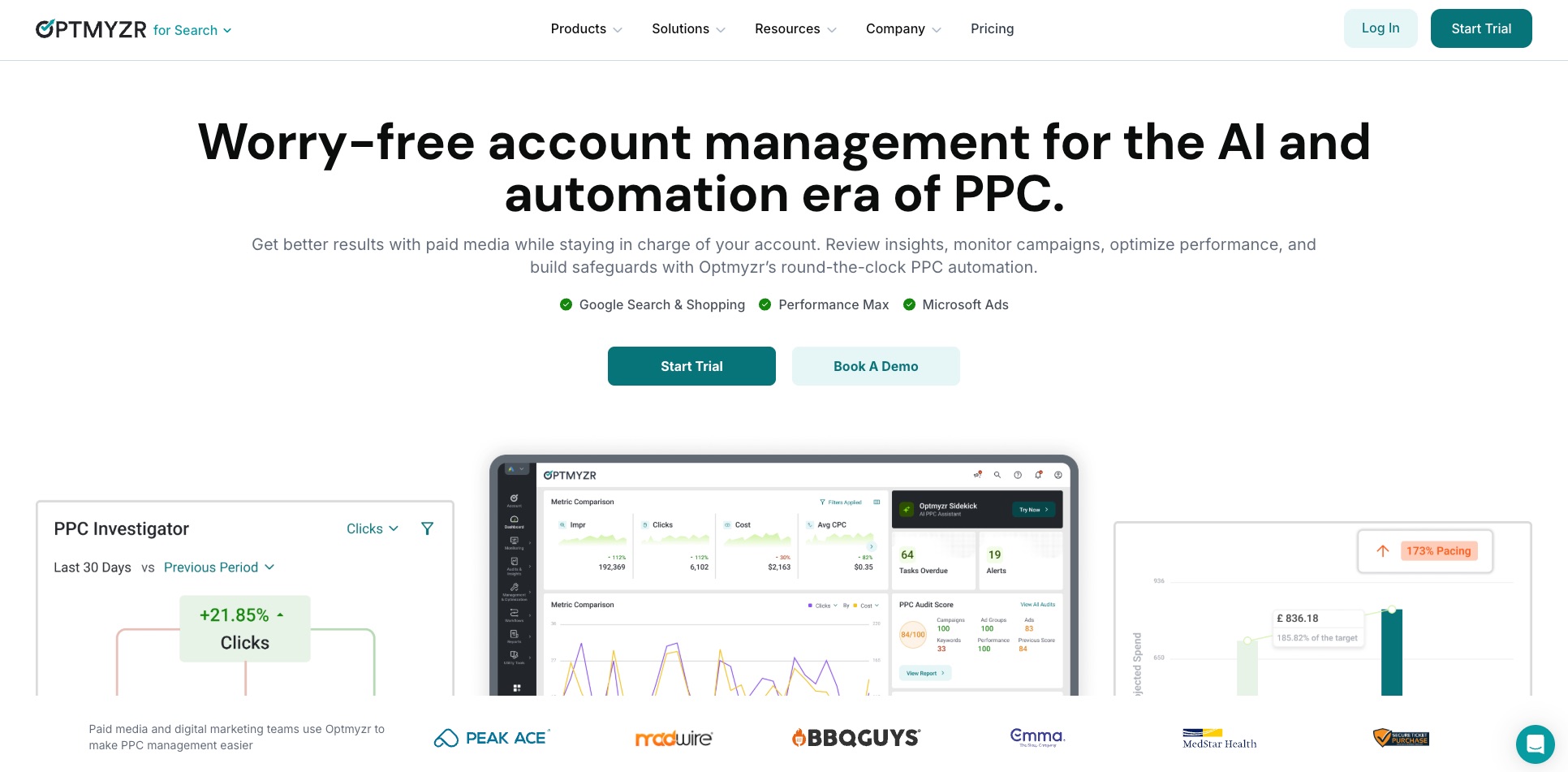
Optmyzr is an advanced suite that automates routine tasks and provides smart recommendations. Created by former Google employees, its design reflects real-world campaign needs.
What I find most helpful:
- Rule-based optimizations: For example, if a keyword’s CTR falls below 1% for five days, it can pause automatically.
- Enhanced reporting: Quickly generate custom performance reports for your team.
- Shopping Campaign solutions: Useful for eCommerce when optimizing product listing ads.
I once integrated Optmyzr into an eCommerce campaign with thousands of SKUs.
Its rule-based methods helped manage a large number of product ads by pausing those for sold-out items and increasing bids on products exceeding ROAS expectations.
7. AdEspresso (by Hootsuite)
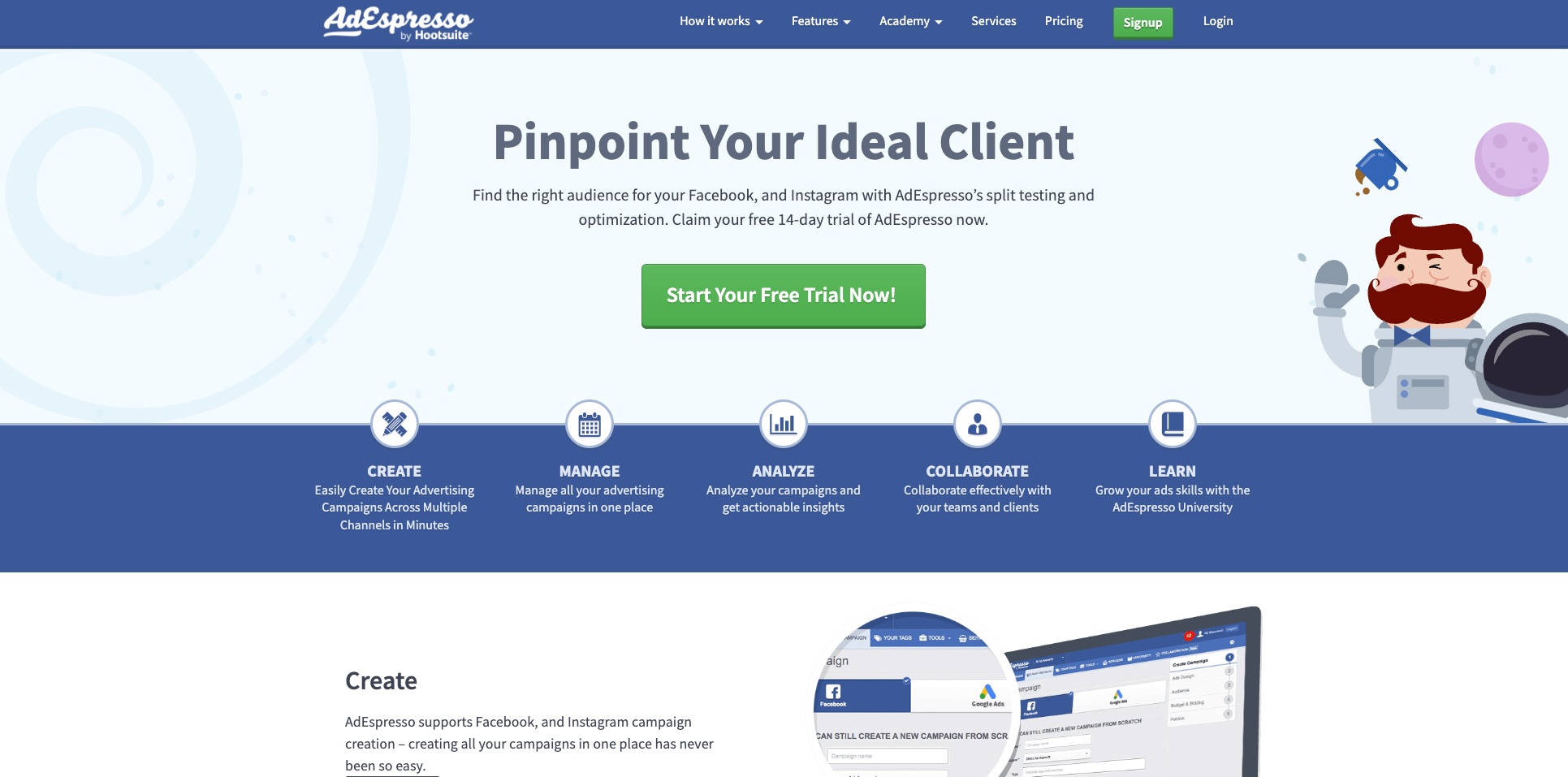
AdEspresso focuses on both Facebook and Google Ads, with an emphasis on simple campaign creation and testing. If you value A/B testing, AdEspresso is built for you.
I appreciate being able to create multiple ad variations, different headlines, images, calls to action - all from one dashboard.
The system tests these variations and then focuses on the ones performing best. In 2025, this kind of flexibility is very useful for catching short-term trends.
AdEspresso also integrates with Hootsuite for social scheduling, making it a handy multi-platform solution if you rely on social media traffic.
8. SpyFu

SpyFu is one of my favorite competitor research tools.
It is known for both SEO and competitor insights, and I also use it when setting up PPC campaigns.
The data is extensive. With SpyFu, I can review the keywords competitors are buying, see how long they have run certain ads, and estimate their monthly spend.
Why it makes the list:
- Deep competitor analysis: Identify effective keywords, negative keywords, and competitor budgets.
- Historical data: Compare past and current competitor ads.
- Affordable pricing: It is cost-effective considering its many features.
I use SpyFu to help shape new campaigns.
When entering a new industry, SpyFu offers useful hints on best practices and potential pitfalls.
9. Skai (formerly Kenshoo)
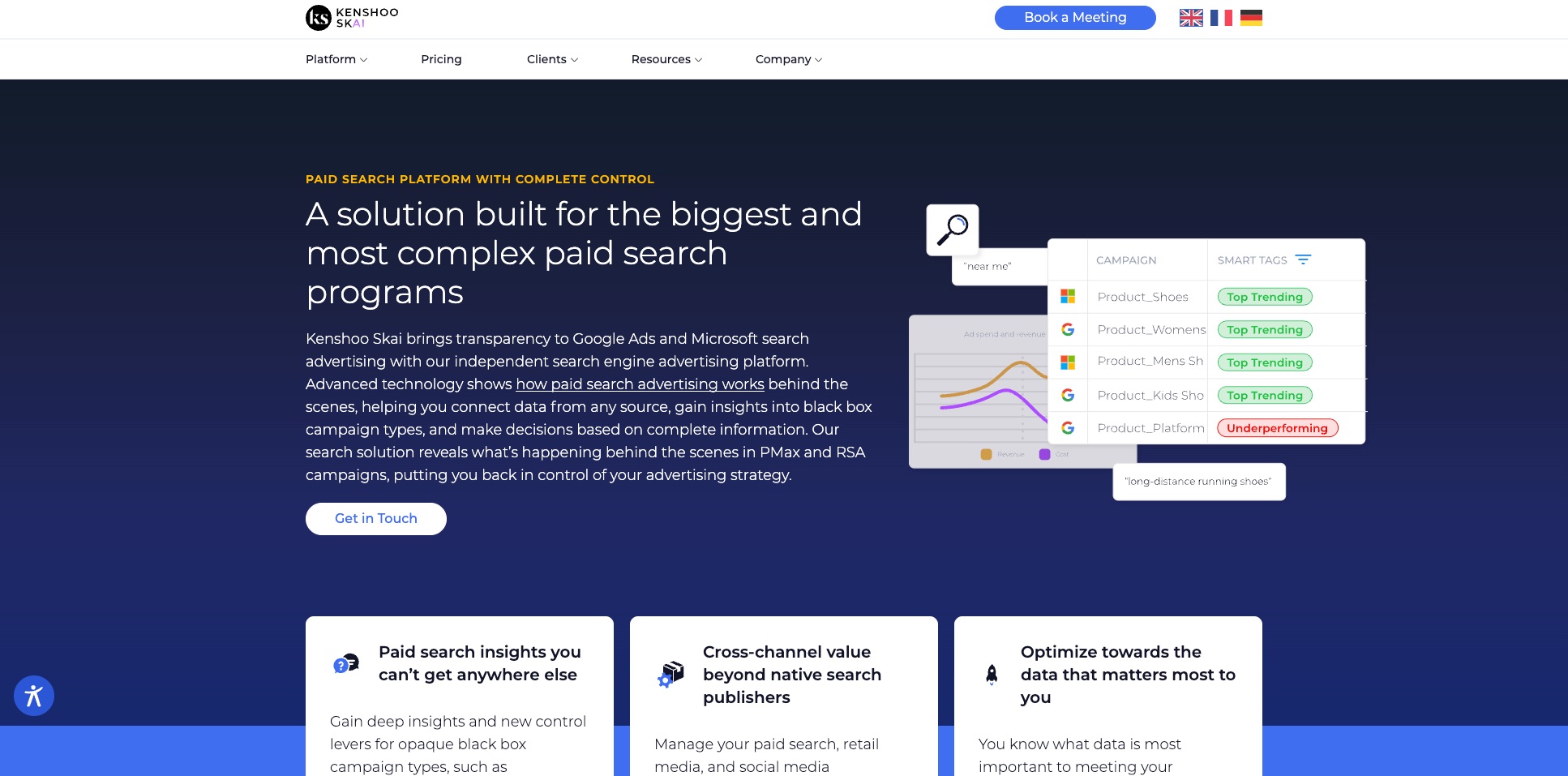
Skai is a high-end campaign management platform that depends on data-driven insights.
It is made for larger agencies and enterprises running ads across several channels including Google, Bing, Facebook, Instagram, and Amazon.
Main draws:
- Unified performance data from different channels
- AI-based budget pacing and optimization
- Insights across channels for keeping ROI on track
Its real strength is found in its forecasting models. I once used Skai during a major anniversary sale campaign.
Instead of setting budgets manually for each channel, Skai predicted potential reach and conversions and then shifted spending to the best-performing channels as the promotion went on.
Not everyone may need it. Skai’s pricing can be high, and if you are not handling large budgets, you might not see enough value to justify the cost.
However, for larger operations, its ability to work across channels can make a big difference.
Comparison Table
I’ve summarized the key points and approximate pricing for these first five platforms in the table below.
Handling the PPC Chaos in 2025
PPC today is more competitive and more automated than ever before.
As advertising networks become more intertwined, tools that bring everything together are in great demand.
I have seen the reliance on data-driven methods replace tasks that once required a whole team.
This change can be exciting but also overwhelming if you are unsure which direction to take.
When choosing PPC management software, ask yourself practical questions:
- Budget – Are you handling a small operation or a very large one?
- Channels – Are you focusing only on Google or also advertising on Bing, Facebook, and Amazon?
- Level of automation needed – Do you prefer a tool that works mostly on its own, or one that allows for hands-on adjustments?
- Integration – Which tools easily connect with your CRM, analytics software, or other ad platforms?
My Trials and Triumphs with Each Tool
I have gone through plenty of trial and error with nearly every tool on this list.
There were days when frustration took over because a tool’s interface wouldn’t work as expected - or I set up an automation incorrectly and paused a winning campaign. The lesson is that even great software depends on the strategy behind it.
At the same time, these tools brought clarity:
- When I needed bulk changes, Google Ads Editor came through.
- For quick wins, WordStream Advisor saved me hours of uncertainty.
- Semrush gave me clear insights into how opponents were running their campaigns.
- MarinOne and Skai performed best for large-scale automated management.
- Optmyzr was ideal for rule-based adjustments and detailed reporting.
- AdEspresso simplified creating and testing ads for Facebook and Google.
- SpyFu revealed the tactics behind competitors’ successes.
- And of course, SEO.AI let me merge content strategy with paid search campaigns and optimize product feeds in one place.
Often I use more than one tool at the same time.
For example, I might use SpyFu for competitor research and Optmyzr for optimizing an eCommerce campaign, then finalize settings with Google Ads Editor.
Practical Tips for Maximizing Your PPC Efficiency
I have learned many lessons along the way. Here are some tips I still follow:
- Start with solid data instead of relying solely on intuition. Use a tool like Semrush or SpyFu to confirm trends related to demand, competition, and costs.
- Set up rules and automations carefully. They save time when done right, but can cause problems if not set correctly.
- Test on a small scale before expanding: With tools like AdEspresso, try different ad versions first and only invest more in the ones that perform best.
- Keep reviewing and adjusting: Even when using automation, check performance regularly for any unusual changes.
- Stay open to improvements: Many platforms roll out new features often. Even small updates can make a difference.
Disclaimer: The pricing and features mentioned reflect the landscape as of 2025.
Always check the latest details on each platform’s website for the most accurate, current information.
Want to try the #1 AI Toolkit for SEO teams?
Our AI SEO assistants helps write and optimize everything - from descriptions and articles to product feeds - so they appeal to both customers and search engine algorithms. Try it now with a free trial→

![The 9 Best PPC Management Softwares Right Now [2025]](https://cdn.prod.website-files.com/627a5f477d5ec9079c88f0e2/6613aaaa53d5b53093f7b8b3_oskar-mortensen.jpg)









